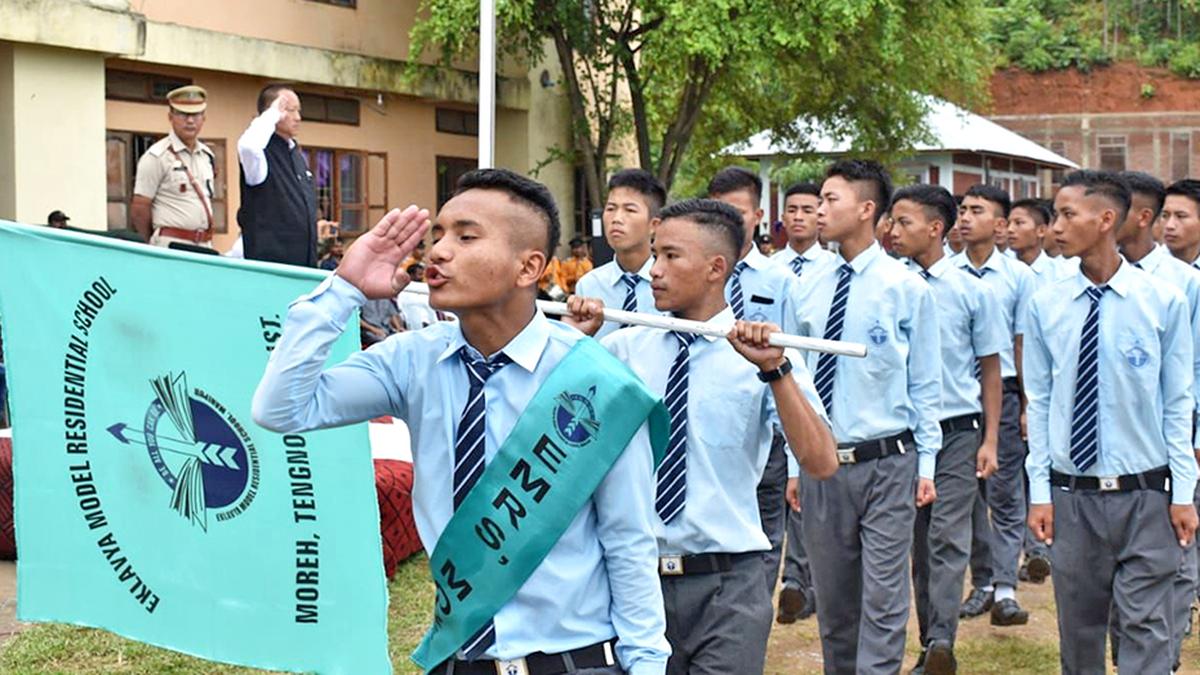Eklavya Model Residential Schools had been set up by the government to provide quality education to students belonging to the Scheduled Tribes
After multiple representations from students of the Eklavya Model Residential Schools (EMRSs) and their parents, the National Education Society for Tribal Students (NESTS) has issued a circular introducing English medium of instruction in all EMRS from Class 9, beginning the next academic session (2025-26).
However, there won’t be any change in the medium of instruction for Classes 10 and 12 in 2025-26.
Also read | Centralised hiring leads to language, cultural barriers in Eklavya schools
The EMRSs had been set up by the government to provide quality education to students belonging to the Scheduled Tribes. At present, there are 477 functional EMRSs across the country.
While the Eklavya schools in States such as Tamil Nadu, Andhra Pradesh, West Bengal and some in Chhattisgarh say that they have been following English medium, schools in Rajasthan, Gujarat, Jharkhand and Uttar Pradesh are using Hindi as the medium of instruction.
Challenging transition
Some of the teachers, principals, and district officials in Rajasthan and Jharkhand told The Hindu that transitioning to English would be a challenging task that might take three to four years to take effect. They said there was a “huge aspiration” amongst the parents to see their children learn a global language like English.
Sources added that NESTS had received multiple representations from parents and students in States such as Uttar Pradesh and Gujarat, requesting English medium of instruction. They also highlighted that not all EMRSs had teachers who could teach in English.
In the circular issued on February 18, NESTS said it was introducing English medium of instruction across such schools to bring uniformity and to “enhance the academic standards and professional prospects of all EMRS students”. It will help them to better prepare for competitive exams such as JEE, CUET, NEET, UPSC, and “broaden their access to universities in India and abroad, where English remains the primary language of instruction”.
This is also in keeping with the government’s stated objective of developing the Ekalavya schools along the lines of the Navodaya Vidyalayas.
NESTS has said that the existing medium of instruction would continue for those batches going into Classes 10 and 12 in the academic year 2025-26. “Schools are advised to organise training sessions, workshops, and provide supplementary learning materials to facilitate the effective implementation of this change.”
While principals and teachers in Rajasthan and Jharkhand acknowledge the long-term benefit of the transition, they are also nervous about the immediate consequences. A school principal at an EMRS in Rajasthan said, “Hindi medium was being followed so far at the school. We have now started teaching in Hindi and English in Class 6. It will be trouble for students entering Classes 9 and 11 this academic session.”
In its circular, NESTS has said, “Initially, if the students need further explanation in any other language, to make them understand the concept, other languages may be considered on need basis. However, assessment process in English may be insisted upon.”
A district official in Jharkhand said Eklavya schools in the State had been teaching in Hindi medium throughout – from Classes 6 to 12. “The teachers are not trained. It might take a year or two to complete it,” he said. Another EMRS school principal in Rajasthan reckoned it could take up to four years.
Published – February 22, 2025 09:35 pm IST
